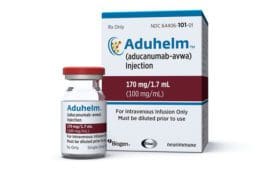
A team of researchers from Rutgers University has made progress toward better understanding—and potentially someday targeting—human chromosome 21 gene OLIG2, a gene that impairs cognitive function in those with Down Syndrome.
Typical babies are born with a pair of 23 chromosomes, while babies with Down Syndrome have an extra copy of chromosome 21. This results in changes in how the body and brain develop, leading to both mental and physical problems. By focusing on chromosome 21 gene OLIG2 as a potential target for prenatal therapy, researchers are hoping to reverse abnormal embryonic brain development, rebalancing the two types of neurons in the brain—excitatory and inhibitory—and potentially improving cognitive function after birth
The team collected skin cells from Down Syndrome patients that were genetically reprogrammed to human-induced pluripotent stem cells (hiPSCs). hiPSCs resemble embryonic stem cells, the special cells that can develop into many different types of cells, including brain cells, during early life and growth and are useful tools for drug development and disease modeling.
The researchers then used a pair of experimental models—a living 3D organoid model of an early developing brain and a mouse brain model that was implanted with the human cells within a day of the mouse’s birth.
The researchers found that the inhibitory neurons were overproduced in both the 3D model and the mouse brain, while the adult mice used in the study developed impaired memory, and that the OLIG2 gene plays a crucial role causing these effects. The researchers were able to inhibit the gene, which led to improvements in the mice subjects.
Peng Jiang, assistant professor in the Department of Cell Biology and Neuroscience at Rutgers University–New Brunswick, explained in an exclusive interview with R&D Magazine that these cells could lead to research breakthroughs.
“We culture those brain cells in three-dimensional conditions and those brain cells can actually form clusters, where inside the cluster they form certain structures that mimic the early human fetal brain or embryonic brain development,” Jiang said. “Those stem cells provide a powerful tool for us to better understand disease mechanisms and provide a platform for future drug screening.
Using animal models to study Down syndrome is very challenging because the mice don’t have chromosome 21, so the genes are distributed to different amounts of chromosomes and because of that most of the mouse models only have distribution of part of the human 21 genes, leading to discrepancies. The organoid model gives us a new opportunity to look at the brain development in the early fetal stages. This way we actually have a mouse model that contains a large number of human cells to allow us to further examine the properties of the diseased human neurons,” he added.
According to Jiang, the study could spark future research for neurodevelopmental disorders such as autism spectrum disorder. He also said the duel model approach could provide scientists with a better understanding of Alzheimer’s disease, which Down syndrome patients commonly develop.
“In a later stage of the Down syndrome patient’s life they tend to develop Alzheimer’s disease, around their 60’s,” Jiang said. “This gives us a good opportunity to understand how an abnormal expression of those genes cause an abnormal brain development and also lead to an early onset of neurodegeneration Alzheimer’s disease in those patients.
Jiang explained what the next step for the researchers would be.
“As a next step we really want to see if we can use small molecule drugs that can target that gene and see if these drugs can help suppress the gene and improve the behavior performance of animals,” he said.
According to the U.S. Centers for Disease Control and Prevention, about 6,000 babies are born each year in the U.S. with Down syndrome.
The study was published in Cell Stem Cell.
Filed Under: Neurological Disease




